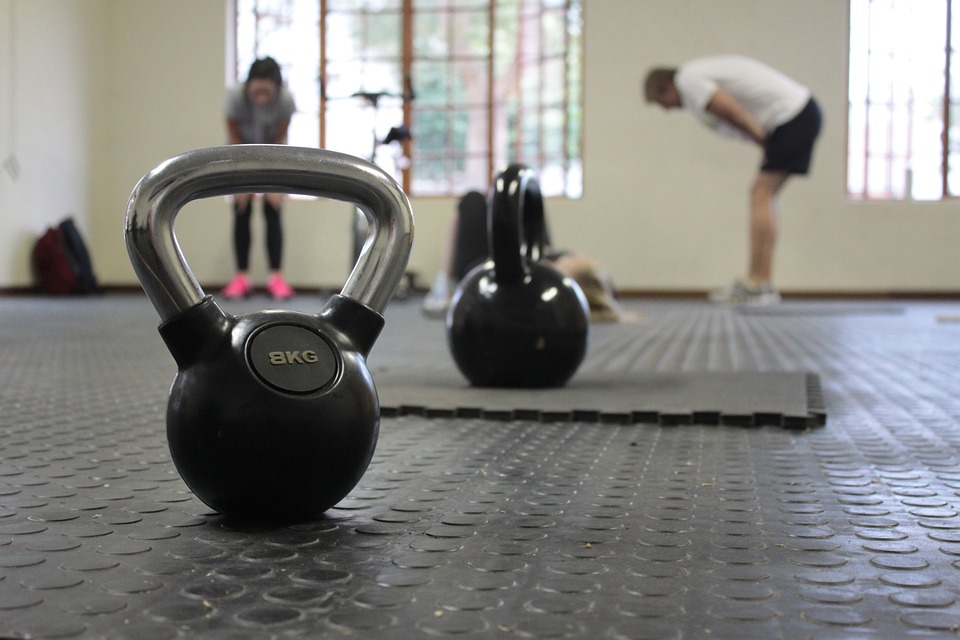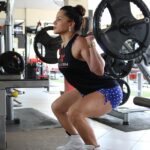Those who believe they don’t have time to exercise their body will at some point have to make time for sickness.~Edward Stanley, Earl of Derby, 1873
Based on the evidence presented by research and health studies, it appears that the advantages of exercising are numerous, yet it seems the majority of people are not taking advantage of this. For decades, those of us in the holistic health field have recommended that clients engage in more physical activity. The Centers for Disease Control reported that prior to the pandemic, fewer than a quarter of Americans were getting the suggested amount of exercise. Nathan Coles, D.C., chiropractor, owner of Coles Chiropractic and Massage in North Carolina, and creator and instructor of the Certified Holistic Fitness Specialist Program at Trinity, says that the percentage of individuals engaging in physical activity stayed the same up until the coronavirus outbreak. Since then, most of the people have cut down on the amount of exercise they do. Accordingly, Dr. Coles thinks that even fewer individuals in the population are exercising routinely.
As holistic health professionals, we understand the significance of physical activity for all-around well-being. Any kind of physical activity is advantageous, with some forms being more advantageous in certain ways than others. In years gone by, cardiovascular training was seen as the ultimate exercise (e.g. walking, running, swimming, cycling and so on), while weightlifting and other forms of resistance training (utilising weights, resistance bands, or simply using your own body weight) trailed behind. There is no doubt aerobic conditioning is important. The preference for physical attractiveness has been a constant, yet recently what is deemed attractive in terms of body type has altered. Coles states that the key motivator for the growing interest in resistance training is appearance. Initially after WWII, but becoming increasingly popular in the 1980s, the preference shifted to slim, fit individuals. This was largely due to the influence of bodybuilders and movie stars with more muscular builds. This resulted in an increase in individuals who began engaging in strength training. At the same time, fitness experts became aware of the numerous health advantages of resistance training and started promoting it more often.
What’s so great about resistance training? The short answer is a lot! Here are some reasons why utilizing free weights, resistance bands, or utilizing bodyweight exercises can help to maintain your overall well-being. Be patient, though. Building muscle doesn’t happen overnight. Everyone reacts to training a little differently. Coles states that with a regular regimen of lifting weights and eating right, one could see significant improvement in muscle after a few months.
The science-backed benefits of resistance training
Engaging in strength training yields more than just better overall physical fitness. Engaging in regular resistance training helps maintain good cardiovascular health, strong bones, a clear mind, and efficient metabolism, as well as reducing the likelihood of numerous chronic illnesses.
1. Improves body composition
Strength training is beneficial in that it decreases body fat while aiding in the growth of lean muscle mass. Research recently concluded that people who lift weights two or more times each week are 30% less prone to accumulating extra fat in their bodies over the long run.
Having an excessive amount of body fat greatly increases one’s odds of developing chronic medical conditions including metabolic syndrome, heart issues, diabetes, and certain types of cancers; conversely, having a greater proportion of lean mass is known to reduce the chances of such long-term diseases.
2. Helps manage blood glucose
An increase in muscle size is related to better glucose control (as seen with lower HbA1c readings) and a lower chance of getting type 2 diabetes.
The more a muscle is called upon to perform, the more glucose the body will take from the blood and send to the muscle cells as a source of energy. This lowers blood sugar during training. However, muscle mass is more metabolically active when not in use than fat cells and is able to absorb more sugar when prompted by insulin even when not partaking in any physical activity.
When there is an increase in blood sugar level, the pancreas will secrete insulin, which is a hormone. A connection is seen between muscle bulk and insulin sensitivity, meaning that cells and muscles take in glucose from the blood faster. It is imperative to be responsive to insulin in order to keep blood sugar levels within optimal range.
3. Reduces levels of chronic inflammation
The continual occurrence of inflammation inside the body can hasten the aging process and can be linked to metabolic syndrome, heart disease, and diabetes. The presence of inflammation can be determined by testing for the blood biomarker hsCRP.
Research points to a strong link between engaging in resistance training on a regular basis and having significantly fewer high-sensitivity C-Reactive Protein (hsCRP) levels than those who do not. When muscle cells are kept active and in good condition, they emit compounds which assist in the regulation and monitoring of the body’s chronic inflammatory reaction.
It is essential to bear in mind that physical activities such as weight training can cause briefly inflammation that is fixed with well deserved rest and recuperation. Read more about that relationship here .
4. Increases strength, power, and endurance
In order for a muscle to increase its strength, power, and stamina, it must be put under strain and broken down. The most effective technique for accomplishing this goal is by utilizing strength training. Strength training causes the muscles to be broken down and the fibers to be torn apart on a small scale. The muscles increase in strength when the body repairs the damage caused. By consistently exercising the muscle in this manner–paired with breaks and enough consumption of dietary carbohydrates and protein–will lead to modifications in the structure and capabilities that will increase their strength, power, and stamina.
5. Enhances flexibility
Reaching the peak of strength, power, and endurance calls for a certain degree of flexibility. To everyone’s surprise, not only stretching, but also strength training can be helpful in improving flexibility and the range of motion. One possible explanation? Muscular strength can lead to a restriction in the ability to move freely and reach a wide range of motion.
6. Sharpens brain health
Strength training enhances cognitive well-being by encouraging the growth of fresh brain cells, improving the circulation of blood to the mind, keeping synaptic plasticity which is necessary for recollecting and safeguarding existing brain cells from harm caused by swelling.
At the least, engaging in two weight training exercises per week has been seen to substantially strengthen general cognitive capabilities, executive abilities, and short-term memory recall—especially among the aging population. In older individuals, if aerobic exercise that includes resistance training is done three times a week, lasting 45-60 minutes, it was found to produce better results in markers of intellectual performance than without the exercise.
7. Maintains bone and muscle health
As people age, it is natural for their bone and muscle mass to deteriorate, however, incorporating strength training into a routine can help in decreasing the chances of accidents, hospital visits, and fatalities that happen due to slipping or fracturing. Having healthy bones and muscles helps to keep someone able to do daily tasks without difficulty.
By performing weight-bearing exercises, stress is placed on bones in the same way that strength training stimulates muscle growth – by first breaking down the muscle and prompting the body to rebuild it. Stress has been found to encourage the formation of new bone cells, resulting in a strengthening of existing bone mass and density.
8. Promotes heart health
Combining activities that increase the heart rate and breathing rate with those that build muscle helps maintain the best possible heart health. It has been demonstrated that incorporating no more than a single hour of resistance exercise has been linked to a remarkable decrease in cardiovascular disease likelihood, increased longevity, and improvements in cholesterol levels, BMI, and blood pressure.
Maximizing strength training benefits
The American College of Sports Medicine advises adults to do a minimum of two days of strength training each week with no two days in a row, plus a minimum of 150 minutes of aerobic activity every week. Have a look at this article to find out how to include both activities in your daily schedule.
And more strength training isn’t always better. Most people may only need two to three meetings per week. Signs of excessive soreness, bad sleep, low energy levels, and no progress in training could mean that the stress you are putting on your body is damaging, rather than beneficial to your exercise routine. Overtraining can result in muscle harm as opposed to muscle augmentation (hypertrophy).
Taking enough breaks between exercises, providing your body with the nutrients it needs, and drinking enough fluids all help you to get the best results from each workout. This book explains more thoroughly some of the essential components, as well as indicators linked to muscle growth.
Resistance Training Workouts
Are you ready to start building some muscle? Remember to tailor your workouts to your own abilities, needs, limitations, and objectives, so do not rely on a single workout plan that works for everyone. It is advised that you seek advice from a knowledgeable exercise professional or medical doctor for personalized training procedures.
When you’re ready to embark on resistance training, it may be a good idea to start off with lighter weights, such as dumbbells or barbells, which are the most commonly used tools for this type of exercise. Gains in health can be achieved by exercising with resistance bands, kettlebells, or bodyweight exercises.
If you still don’t have enough motivation after conversing with your support group, there are various online sources providing exercise guidance. “I really like fitnessblender.com videos,” says Coles. If you go to the free video section on the website, you can look through 635 different exercise videos, sorted by body area, exercise type, difficulty, amount of time, calories burned, and equipment needed. If the chosen video does not involve a warm-up or cool-down, make sure to complete those exercises yourself.
Tips for Success
Prior to starting any physical activity, consult with your healthcare provider if you have any injuries or preexisting medical issues which could be impacted by physical activity. Previously stated, consult with a knowledgeable expert for tailored advice. If done properly, strength training is an incredibly beneficial practice to make part of your lifestyle, taking heed of the safety considerations. Before we leave, we have some advice to help you achieve your goals.
Begin at a low intensity to avoid feeling strained muscles, and take it step by step while getting used to new exercises and levels of exertion. It is normal to feel a bit uneasy to begin with, but make sure to pay attention to how you are feeling and look at the situation as a whole. It is the same with exercise; if you try to do too much too quickly you will likely be harmed or overly tired and unlikely to get the desired result of strong, vibrant muscles. On the other hand, a well thought out exercise plan which is followed diligently over a period of time will succeed and provide excellent results. Coles recommends a nutritious, balanced eating plan that can provide all the vital components for recuperation, including essential amino acids, vitamin C, and zinc. He suggests other approaches as well, including foam rolling, massage, or taking an Epsom salt bath to ease aches in the muscles. He suggests ensuring an adequate amount of rest to help the body recover after each workout.
Coles suggests that having a particular, imminent objective can help keep one motivated and concentrated. It is hard for a lot of individuals to stay dedicated to an exercise routine with no clear target or timeline. He insists that it’s significant to have a goal to aspire to, whether it’s for a holiday, a birthday, or some sort of contest. Coles states that devising a strategy for exercise and healthy eating is fundamental for achieving good results. Benjamin Franklin allegedly stated, “If you neglect to make a strategy, you’re essentially setting yourself up for disaster.”
It is essential to pick an exercise modality that fits with your character so that you have fun doing it, in order to ensure exercise remains part of your routine. Those who are more confident or dominant may find they enjoy more intense physical activities such as competitive sports, while those who take a more relaxed approach may favor activities like walking, yoga, and Qigong. This article concentrated on strength training, but it would be possible to adjust aspects of the workout to suit your individual style. If you tend to be introverted, you may prefer to exercise alone in the privacy of your own home. If you are more outgoing, you could enrol in a course or go to a gym with the intent of being around others for the sense of friendship and reinforcement.
Don’t know where to start?
Strength training is advantageous to each individual no matter what their age, gender or experience with the activity before. Your ideal workout routine is based on your individual needs and current fitness level. It’s a plan tailored specifically for you. A personal health specialist or analytics program such as InsideTracker can be helpful in uncovering where to begin, as well as for keeping tabs on and ascertaining the effectiveness of the health plan being put into action. It is possible to experience health benefits by doing even the most basic strength workout, which does not require any special equipment or a gym.



